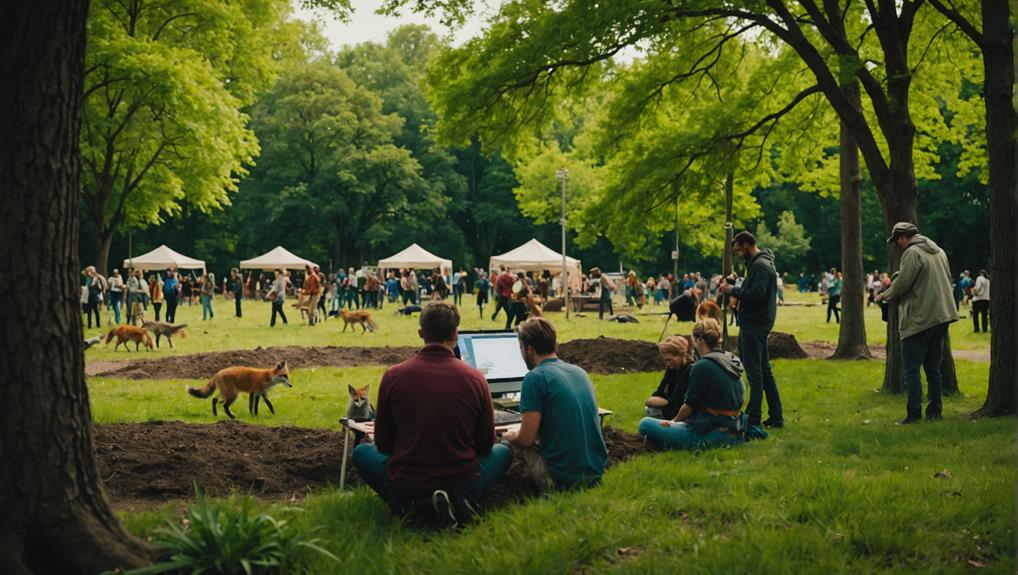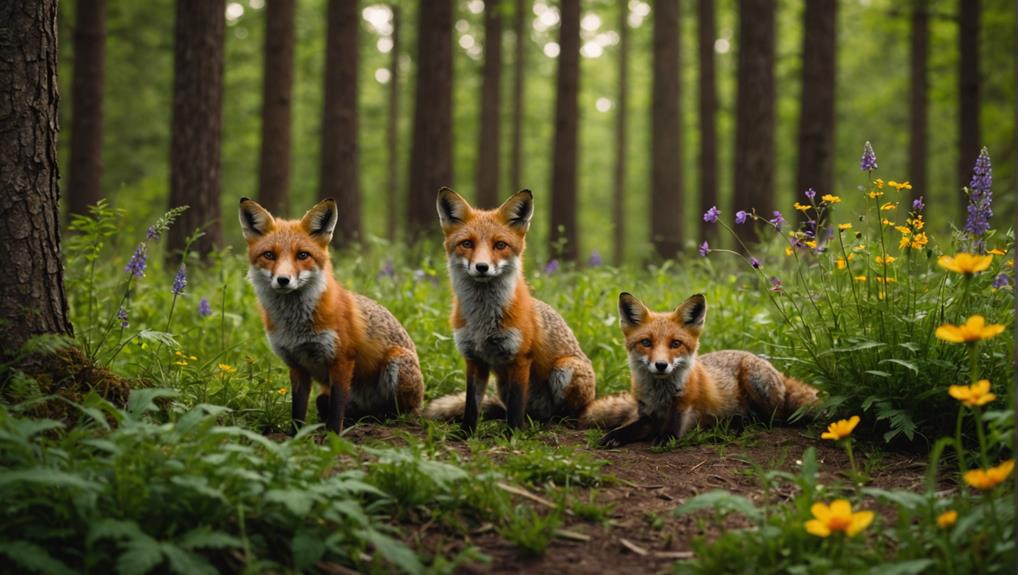To protect fox species and their habitats, start by understanding their needs. Keep natural spaces like forests or grasslands safe—these are fox favorites! You can also support local conservation groups working to preserve these areas. Finally, get involved in community efforts, like volunteering for wildlife programs or attending awareness events. Every little action helps! Remember, even if you can't adopt a fox (as fun as that sounds!), you can still make a positive impact. So, keep that passion alive—there's plenty more to discover about how you can help these clever creatures thrive!
Contents
Understanding Fox Species and Their Ecosystems
When exploring fox species and their ecosystems, it's vital to recognize how these adaptable creatures thrive in various environments. Red foxes, including the Sierra Nevada red fox, showcase remarkable traits that allow them to survive in forests, grasslands, and mountainous areas, often utilizing dens in burrows or underbrush for shelter.
Picture them bounding across the snow with their dense winter fur, acting like natural snowshoes—now that's a sight! Their ability to thrive in urban settings, scavenging for food, highlights their remarkable adaptability and resourcefulness, especially in human-influenced spaces like parks and gardens their adaptability to urban environments.
However, habitat loss from urbanization and development is a serious issue affecting red fox populations. Imagine how tough it must be for these clever creatures to find a cozy den when their homes are disappearing!
The Sierra Nevada red fox is particularly at risk, with only about 20 to 50 individuals left in the Eastern Sierra. That's a tiny family reunion!
This makes conservation efforts critical. By understanding the ecosystems where red foxes live, we can better support their survival.
When we work together to preserve these habitats, we're not just saving foxes; we're also protecting the rich tapestry of life that surrounds them. So, let's roll up our sleeves and get involved! After all, a little effort today can make a big difference for these enchanting animals tomorrow.
Strategies for Habitat Preservation
How can we effectively protect the habitats that red foxes depend on? First, we need to preserve natural spaces like forests and grasslands. These areas are essential for red foxes and other wildlife to thrive, especially as their range expands due to climate change influences.
When urban areas expand, implementing developmental safeguards can really help. This guarantees foxes have undisturbed living spaces.
You can also get involved in community conservation initiatives. These projects not only raise awareness about the ecological importance of red fox habitats but also strengthen support for their protection.
Plus, establishing buffer zones around significant areas creates connectivity for diverse plants and animals, which boosts overall biodiversity.
Supporting organizations focused on habitat restoration, like the Eastern Sierra Land Trust, is another fantastic way to make a difference. When you back these efforts, you help secure essential land for fox populations.
It's like giving red foxes a cozy home where they can roam free and live happily.
Community Involvement in Fox Conservation

Community involvement plays an essential role in the conservation of red foxes and their habitats.
These foxes, particularly the red fox (Vulpes vulpes), are adaptable and thrive in diverse environments, making community support vital in preserving their varied habitats. When you engage with local conservation organizations like the Eastern Sierra Land Trust, you contribute directly to habitat protection initiatives aimed at preserving these charming creatures' homes.
Organizing community events can be a fun way to raise awareness about the importance of red foxes and their ecological roles, as they act as both predators and prey within the food web, contributing to ecological balance their ecological roles. You might even consider hosting activities like crafting paper fox masks—who doesn't love a little creativity?
Volunteering for wildlife monitoring programs helps track the health and population trends of red foxes, allowing you to become an active part of conservation efforts. Your participation provides valuable data that can make a real difference!
Plus, advocating for protective land policies and buffer zones around critical habitats guarantees these foxes have safe spaces to thrive.
Final Thoughts
So, if you think protecting foxes is just for tree-huggers, think again! By stepping up for these clever critters, you're not just saving their homes; you're also ensuring a balanced ecosystem that benefits us all. Remember, foxes might be sly, but they need our help to thrive. Join your community, spread the word, and let's make sure our furry friends have a safe place to roam. After all, who wouldn't want to live in a world filled with foxes?














